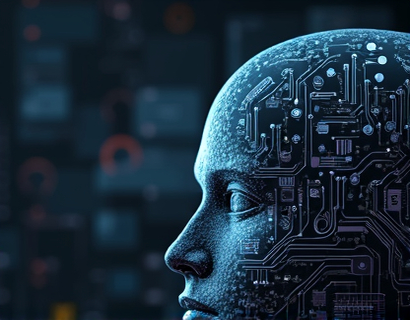AI Chat Interfaces: Transforming Access to Software Insights and Industry Knowledge
In today’s fast-paced technological environment, businesses and professionals face the challenge of staying updated with rapidly evolving software trends, tools, and industry-specific knowledge. Traditional methods of gathering information—such as manual research, lengthy consultations, or sifting through documentation—are increasingly inefficient. Enter AI-driven chat interfaces, a groundbreaking solution that delivers instant, accurate, and actionable insights to users across industries. This guide explores how these interfaces work, their benefits, and their transformative potential in the tech landscape.
How AI Chat Interfaces Work
AI chat interfaces leverage advanced technologies like natural language processing (NLP) and machine learning to understand and respond to user queries. These systems are trained on vast datasets, including technical documentation, industry reports, and real-time data streams, enabling them to provide contextually relevant answers. When a user submits a question, the interface parses the query, identifies key terms, and retrieves information from its knowledge base. Sophisticated algorithms then generate a concise, human-like response tailored to the user’s needs.
Key Components of AI Chat Systems
- Natural Language Processing (NLP): Enables the system to interpret human language, including slang, jargon, and complex phrasing.
- Machine Learning Models: Continuously improve accuracy by learning from user interactions and feedback.
- Integration with Databases: Connects to internal and external data sources for up-to-date information.
- Security Protocols: Ensures data privacy and compliance with industry regulations.
Benefits of AI Chat Interfaces for Software Insights
Adopting AI chat tools offers significant advantages for businesses and tech professionals. These systems streamline workflows, reduce research time, and enhance decision-making through instant access to reliable information.
Instant Access to Knowledge
Time-sensitive decisions in software development or IT management often require immediate answers. AI chat interfaces eliminate delays by providing real-time responses to technical questions, such as troubleshooting code errors, comparing frameworks, or understanding API documentation. For example, a developer struggling with a deployment issue can receive step-by-step guidance within seconds, minimizing downtime.
Enhanced Accuracy and Reliability
AI systems reduce human error by cross-referencing multiple sources before generating responses. They prioritize verified data, such as official documentation or peer-reviewed articles, ensuring users receive trustworthy insights. This is particularly valuable in fields like cybersecurity, where outdated or incorrect advice could lead to vulnerabilities.
Scalability Across Industries
From healthcare to finance, AI chat interfaces adapt to sector-specific needs. A financial analyst might use the tool to interpret regulatory changes, while a healthcare IT manager could query compliance requirements for patient data. This versatility makes the technology applicable to any industry reliant on software solutions.
Use Cases in the Tech Landscape
The practical applications of AI chat interfaces span multiple domains, demonstrating their flexibility and impact.
Software Development and DevOps
Developers use these tools to troubleshoot errors, optimize code, and learn new programming languages. For instance, querying "How to resolve a memory leak in Python?" might yield debugging strategies, profiling tools, and best practices for garbage collection. DevOps teams benefit from instant guidance on configuring cloud infrastructure or automating deployment pipelines.
Cybersecurity and Compliance
Security professionals rely on AI interfaces to stay ahead of threats. Queries about zero-day vulnerabilities or GDPR compliance trigger responses that include mitigation steps, patch details, and legal guidelines. This real-time support helps organizations maintain robust security postures.
Business Intelligence and Strategy
Executives and product managers use chat interfaces to analyze market trends or evaluate software vendors. Asking "What are the top CRM tools for SaaS startups?" could generate a comparison of features, pricing models, and user reviews, aiding strategic decision-making.
Security and Privacy Considerations
While AI chat interfaces offer convenience, their implementation must prioritize data protection. Sensitive queries, such as those involving proprietary code or customer information, require stringent security measures.
Data Encryption
End-to-end encryption ensures that user interactions remain confidential. This prevents unauthorized access to queries containing trade secrets or personally identifiable information (PII).
Access Controls
Role-based permissions restrict system access to authorized personnel. For example, only senior developers might receive permissions to query sensitive infrastructure details.
Regulatory Compliance
AI systems must adhere to standards like HIPAA in healthcare or PCI-DSS in finance. Regular audits and updates ensure ongoing compliance as regulations evolve.
Challenges and Limitations
Despite their potential, AI chat interfaces face hurdles that users should acknowledge.
Contextual Understanding
While NLP has advanced, systems may still misinterpret ambiguous queries. A question like "How do I secure my server?" requires context about the operating system, network setup, and use case to generate a relevant response.
Bias in Training Data
Models trained on biased datasets might provide skewed recommendations. Regular audits and diverse data sources help mitigate this risk.
Dependence on Quality Data
Outdated or incomplete data leads to inaccurate responses. Continuous updates and integration with trusted sources are essential for maintaining reliability.
Future Trends in AI-Driven Knowledge Access
The evolution of AI chat interfaces will further reshape how professionals interact with information.
Personalized Learning Paths
Future systems may analyze a user’s role and skill level to offer customized tutorials. A junior developer might receive foundational coding tips, while a CTO gets strategic insights on scaling infrastructure.
Multimodal Interactions
Combining text, voice, and visual inputs will create richer user experiences. A query about network architecture could return diagrams alongside explanatory text.
Ethical AI Development
Transparency in AI decision-making will grow in importance. Users may demand explanations for how responses are generated, fostering trust and accountability.
Best Practices for Implementing AI Chat Interfaces
Organizations can maximize the value of these tools by following key guidelines.
Define Clear Objectives
Identify specific use cases, such as reducing IT support tickets or accelerating onboarding. Align the AI’s training data and features with these goals.
Prioritize User Training
Educate teams on how to phrase queries effectively. Workshops on advanced search techniques improve the quality of interactions.
Monitor and Iterate
Regularly review system performance using metrics like response accuracy and user satisfaction. Refine models based on feedback to address gaps.
Conclusion
AI chat interfaces represent a paradigm shift in accessing software and industry knowledge. By delivering instant, secure, and accurate insights, they empower professionals to navigate complex technical challenges with confidence. As these systems evolve, their ability to integrate with emerging technologies and adapt to user needs will solidify their role as indispensable tools in the tech ecosystem. Organizations that embrace this innovation today will gain a competitive edge, fostering a culture of informed decision-making and continuous learning.











































